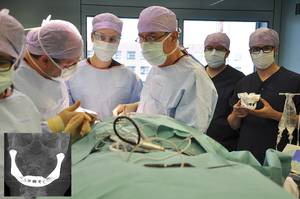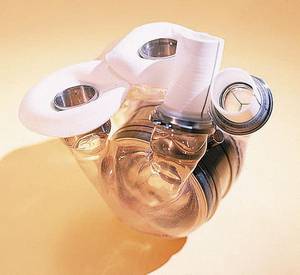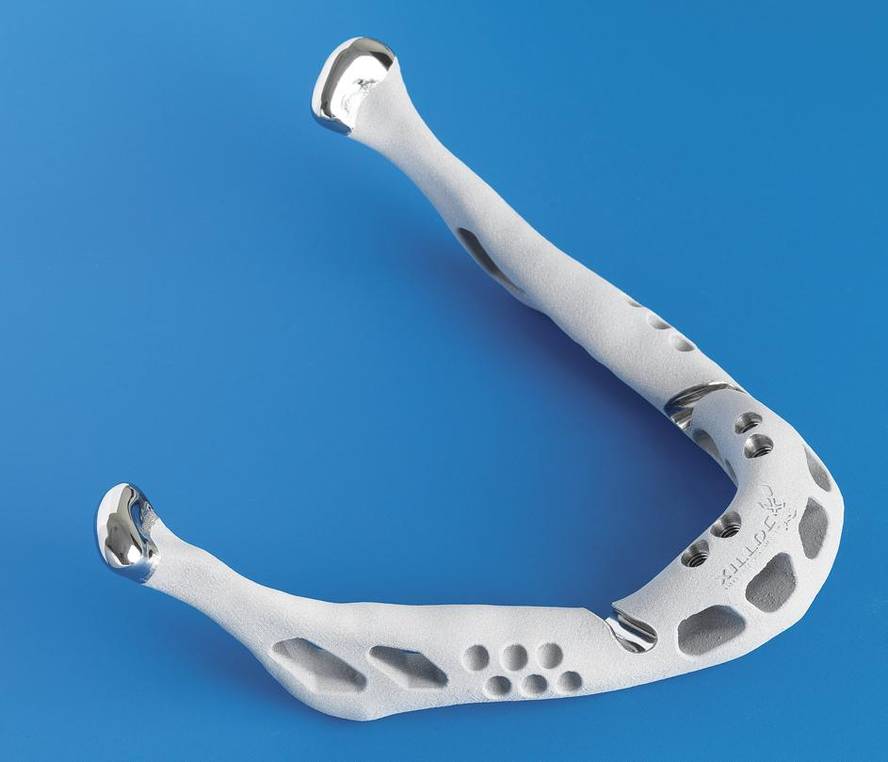Natural trend, from the artificial
Engineers' tricks reach the world of transplantation. In June 2011, in the Netherlands, an 83-year-old woman is transplanted a titanium jaw. He had a chronic bone infection and doctors thought the best option was to transplant the jaw. But they did not do a regular transplant. For their part, the engineers of the company Layer Wise were in charge of developing a synthetic bone through a 3D printer.
It is a common engineering technique for the manufacture of complex industrial parts, the engineer creates in the computer a three-dimensional model of the part, from which the machine is formed by overlapping layers of material. In this case, the printer manufactured the layers with metallic titanium powder, melting with a laser and gluing each of them to the previous one. To complete a millimeter of height, he put 33 layers. In this way, they achieved great precision in the shape of the gag. It has articulated links, muscle bonding areas and a space for blood vessels that the body will develop after transplantation and all these geometric features were designed for the face of this specific patient. And the last step of the engineers' work was to cover the entire gag with a bioceramic material. It is an example of bespoke synthetic bone.
Being a custom gag, doctors easily put it in place and the intervention time was greatly reduced. However, the transplant was not simple and the gag presents some drawbacks. For example, the woman's original gag weighs 107 grams more than her original gag, meaning the patient will have to get used to carrying this extra weight on the face. However, transplantation has been considered a breakthrough. Opens the doors to the concept of body parts printing.
A mechanical ventricle
No livers, kidneys or whole hearts can be made using the printing technique. As for geometry yes, and it is possible that with this technique synthetic parts of the substitutes of these organs can be made. But today's engineering has other tricks to help in transplantation.
In February, 57-year-old Eufemio Garcia was replaced by a mechanical ventricle replacement at the Bellvitge hospital in Catalonia. The device has been called an artificial heart, but it was a turbine that helped pump the left ventricle; it was not a small piece, like traditional artificial valves, not a complete artificial heart, but an intermediate machine. However, it was one of the first transplants of this type of device.

The goal of the transplant, however, was not to remain all life within the body, but a solution until achieving a natural heart. However, doctors stressed that they thought it was long-term, as other artificial organs similar to those currently used only work for a month.
Bellvitg's transplant became famous for Garcia's death shortly after. After the transplant, the achievement was presented to the media a few days later. And the day after the press conference the patient died due to a ventricular arrhythmia. Doctors made it clear that the artificial ventricle worked properly and that it was not a device designed to cope with these arrhythmias (even if the device had a defibrillator).
The device established to Garcia, called Incor, is not transplanted because it does not remove the heart to install the device. It takes care of a part of the heart, the ventricle, without expelling it. In addition, not the entire device is inside the body, has a cable that goes outside connected to two batteries. But we cannot talk about new transplant trends, not to mention these types of devices. They are machines, synthetic and of limited duration, but with these characteristics expand the choice of donor organs and fulfill the biological function during their operation.
Collagen to regain sight
The idea of having artificial organs for a period of time presents great possibilities. And it is not mandatory in all cases to withdraw the artificial organ after the deadline.

The case of cornea is a special example from this point of view. In August 2010, a novel technique was revealed consisting of the transplantation of synthetic corneas based on collagen, obtaining results similar to those of natural corneas transplantation. That is, the patients recovered their sight at the same level. The success of the synthetic cornea lies in the body response. On the synthetic cornea new cells grow, even the nervous ones, thus recovering the normality of the organ. It recovers sight, sensitivity to contact and eventually begins to form tears. Gradually the synthetic cornea approaches the complexity of the natural ones.
However, this complexity is less than that of other tissues. The cornea does not contain blood or lymph. Nor the heart valves. Therefore, synthetic substitutes are more easily integrable than other fabrics.
In fact, whether synthetic or not, the transplant world is increasingly based on small tissues and parts of the body. Organ transplant techniques and subsequent follow-up therapies are significantly improving. But they are avoided as far as possible. The current trend is to preserve the well-being of the patient, which in many cases involves tissue transplantation or its simple insertion.
Hence the modernity of transplant medicine, with advanced techniques, but also with a deep analysis of the general condition of the patient. Where necessary, tissue and synthetic organs may also be transplanted, but more complex transplants may be ruled out. This is the surveillance of the patient's well-being. ·






